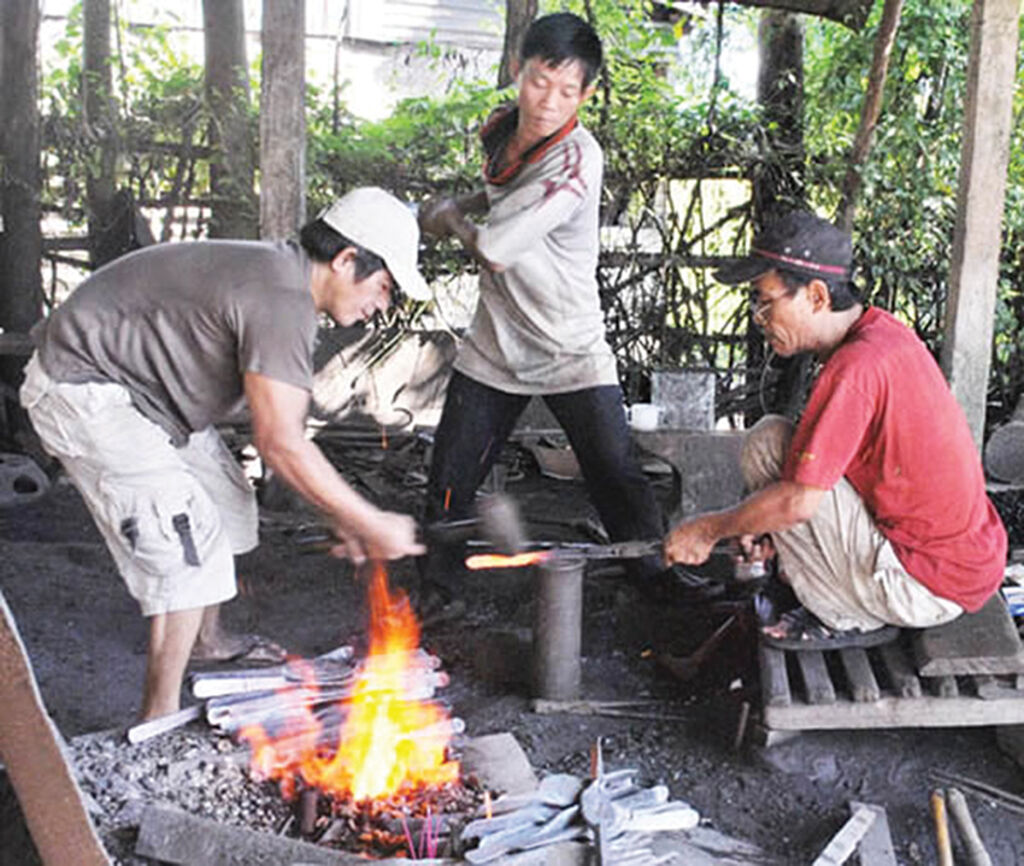 |
| Inside a blacksmith’s workshop__Photo: https://cadn.com.vn |
Located along the Ban Thach river in Tam Ky city of the southern central province of Quang Nam, Hong Lu forging village has long been known for its traditional bladesmithing techniques and durable hand-forged farm tools such as sickles, machetes, hoe heads, shovels, spades and rakes.
The history of the village
According to Tran Dinh Thong, a fourth-generation blacksmith from the Tran family in Hong Lu village, the founder of the blacksmithing craft in Hong Lu was Tran Xa Y, a man originally from the imperial city of Hue. After learning forging techniques and working as a blacksmith in Hue in the early 20th century, he returned to the area now known as Hoa Huong ward in Tam Ky city, where he set up a coal forge and passed the craft down to his descendants. Since then, the blacksmithing craft in Hong Lu has developed strongly.
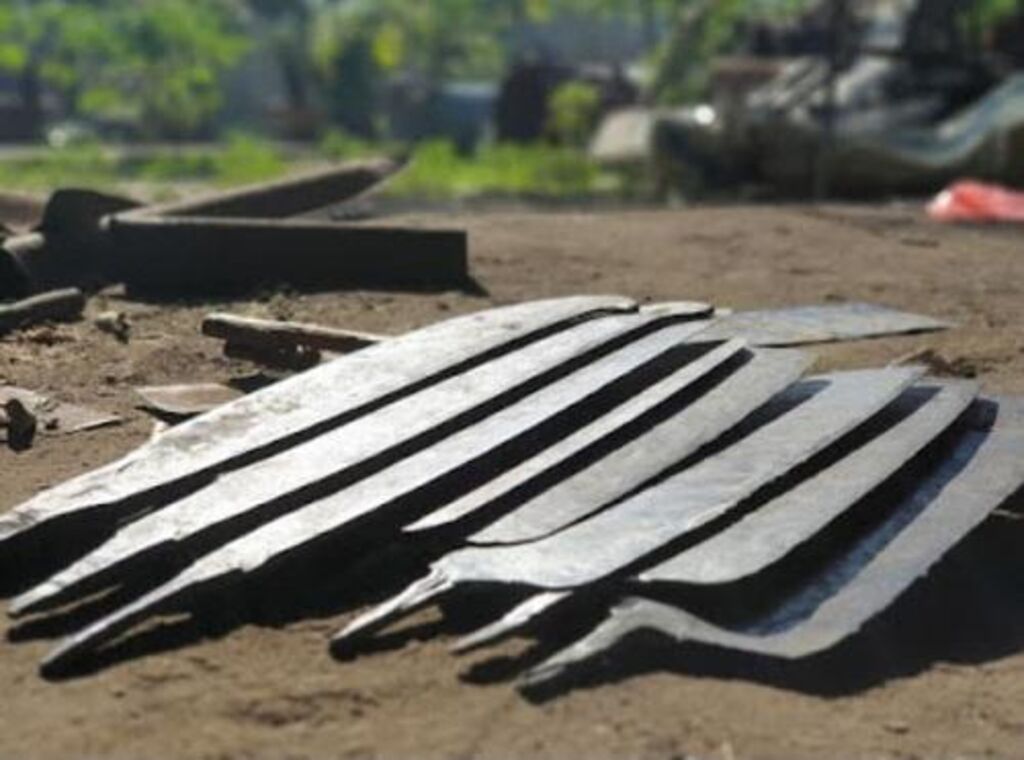 |
| Blades - a well-known product of Hong Lu village__Photo: https://langngheviet.com.vn |
In 1930, Tran Ngoc, a second-generation blacksmith, together with other craftsmen from the village, secretly forged weapons such as stakes, bladed staffs, spears, bows and arrows, knives, and machetes to support the August Revolution. Thanks to his contribution to the country, Tran Ngoc was latter awarded a Certificate of Merit.
During its heyday, the number of blacksmithing hearths in the village grew to 15, with 35 households engaged in the craft. They produced not only metal tools for daily life and agriculture, but also equipment used in the construction of the Phu Ninh hydraulic project in the then province of Quang Nam-Da Nang.
Today, the village has about a dozen blacksmith workshops that mainly produce farm tools, household items, and tailoring equipment. According to Thong, some of these workshops have used machinery such as metal cutters, hammers, drills, grinders, and lathes to assist with heavy-duty tasks and improve the quality and precision of their products.
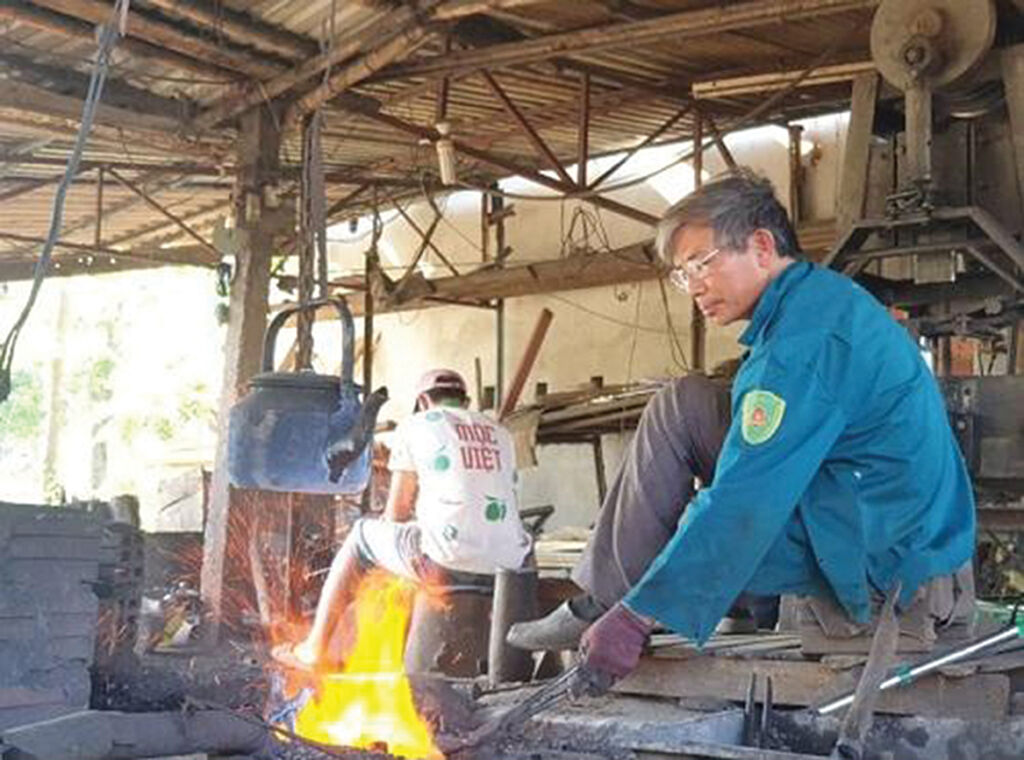 |
| Tran Dinh Thong, a fourth-generation artisan of the Tran blacksmith family__Photo: https://langngheviet.com.vn |
Basic blacksmithing techniques
Blacksmithing requires not only physical strength but also continuous learning, Thong said, stressing that there are no written manuals for the craft. Instead, forging techniques are handed down orally from generation to generation and each family has its own technical know-hows which are closely guarded.
While a blacksmith might learn to forge a basic item within three years, it can take 10 to 20 years to master the skills required to produce high-quality products that meet both technical and aesthetic standards such as blades that are sharp without being brittle, tough without being soft. This level of artistry requires strength, precision, and unwavering patience.
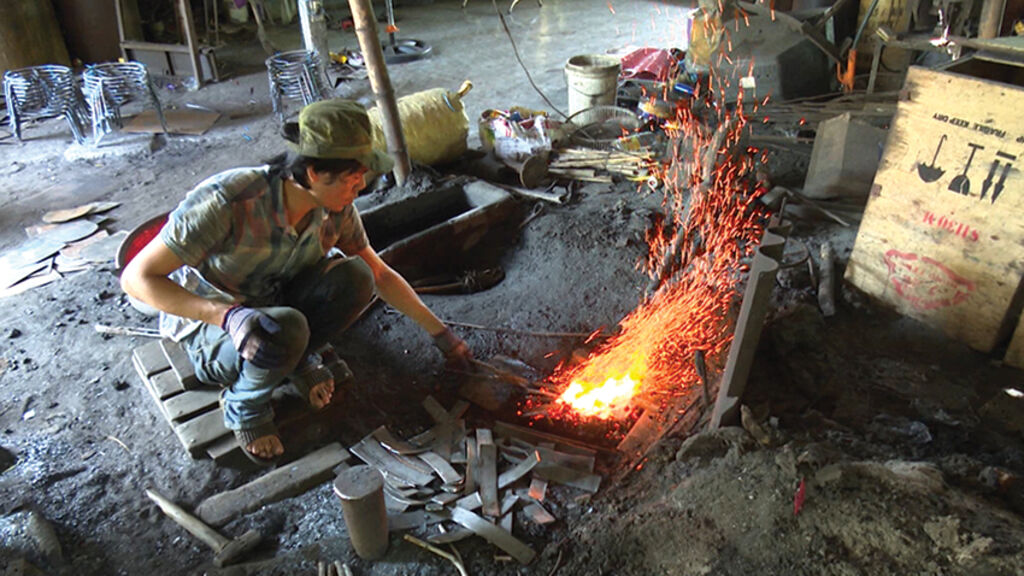 |
| Tempering a blade__Photo: https://langngheviet.com.vn |
Every stage of the forging process requires care, skill, and experience. Whether using machines or working by hand, craftsmen must follow traditional techniques and be thoroughly familiar with each step of the process.
For instance, to create a knife, the smith heats a steel bar in the coal forge, then hammers it into a rectangular shape. A groove is carved into the steel and a sharper strip of steel is inserted. The fused steel is then reheated and further hammered until it becomes one solid block. The knife blank is drawn out, shaped, and refined into a sharp, durable blade.
Crucial to the quality of the final product are the steps of steel selection and quenching. If the steel is underheated, the blade may curl. If overheated, it might chip or crack.
Preserving the traditional craft
To preserve this traditional craft, local authorities have taken steps to support the village’s blacksmiths. Efforts include providing designated production spaces, facilitating market access, and offering funding to support the development and promotion of the craft.
 |
| Machines used to reduce labor intensity and enhance product sophistication__Photo: https://cadn.com.vn |
Hong Lu artisans are also featured at the annual Tam Ky - Sua (Burmese rosewood) Flower Season Festival, where they demonstrate their forging techniques to visitors. These events have become popular experiential tourism offerings, allowing younger generations and tourists alike to witness the craft in action and appreciate the skills behind every hammer blow.
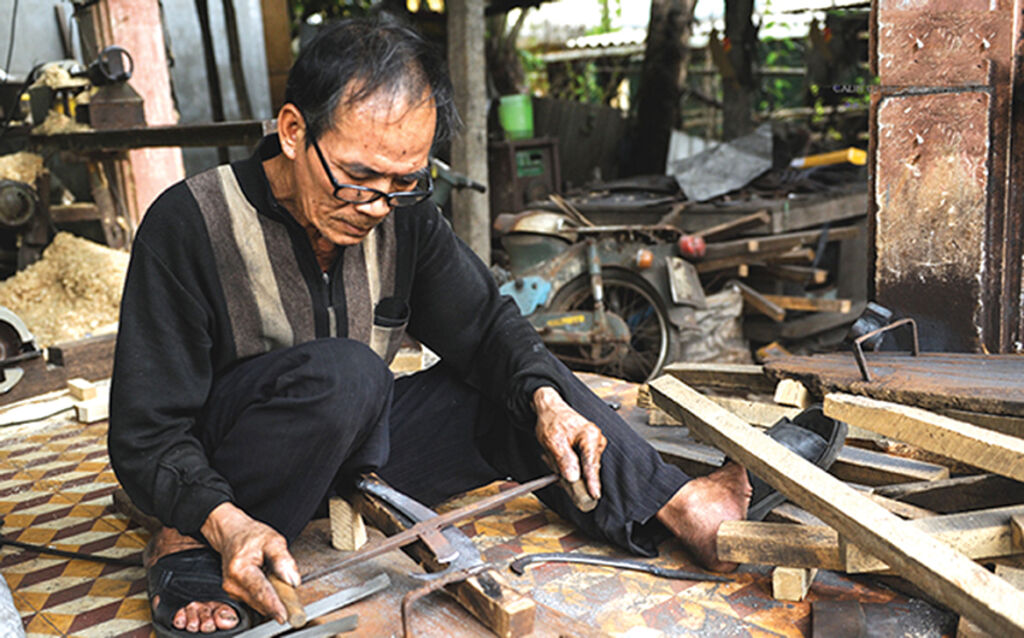 |
| Final finishing of a product__Photo: https://cadn.com.vn |
In a rapidly modernizing world, Hong Lu’s blacksmiths continue to forge not just tools but a living link to Vietnam’s cultural roots. With every blade they shape, blacksmiths preserve the spirit, resilience, and artistry of a village that refuses to let its fire fade.-









